Related Research Articles

Michelangelo Merisi da Caravaggio, known mononymously as Caravaggio, was an Italian painter active in Rome for most of his artistic life. During the final four years of his life, he moved between Naples, Malta, and Sicily until his death. His paintings have been characterized by art critics as combining a realistic observation of the human state, both physical and emotional, with a dramatic use of lighting, which had a formative influence on Baroque painting.
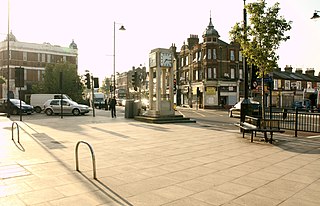
Hanwell is a town in the London Borough of Ealing. It is about 1.5 miles (2.4 km) west of Ealing Broadway and had a population of 28,768 as of 2011. It is the westernmost location of the London post town.

Helen Frankenthaler was an American abstract expressionist painter. She was a major contributor to the history of postwar American painting. Having exhibited her work for over six decades, she spanned several generations of abstract painters while continuing to produce vital and ever-changing new work. Frankenthaler began exhibiting her large-scale abstract expressionist paintings in contemporary museums and galleries in the early 1950s. She was included in the 1964 Post-Painterly Abstraction exhibition curated by Clement Greenberg that introduced a newer generation of abstract painting that came to be known as color field. Born in Manhattan, she was influenced by Greenberg, Hans Hofmann, and Jackson Pollock's paintings. Her work has been the subject of several retrospective exhibitions, including a 1989 retrospective at the Museum of Modern Art in New York City, and been exhibited worldwide since the 1950s. In 2001, she was awarded the National Medal of Arts.

Color field painting is a style of abstract painting that emerged in New York City during the 1940s and 1950s. It was inspired by European modernism and closely related to abstract expressionism, while many of its notable early proponents were among the pioneering abstract expressionists. Color field is characterized primarily by large fields of flat, solid color spread across or stained into the canvas creating areas of unbroken surface and a flat picture plane. The movement places less emphasis on gesture, brushstrokes and action in favor of an overall consistency of form and process. In color field painting "color is freed from objective context and becomes the subject in itself."

Carlo Crivelli was an Italian Renaissance painter of conservative Late Gothic decorative sensibility, who spent his early years in the Veneto, where he absorbed influences from the Vivarini, Squarcione, and Mantegna. He left the Veneto by 1458 and spent most of the remainder of his career in the March of Ancona, where he developed a distinctive personal style that contrasts with that of his Venetian contemporary Giovanni Bellini.
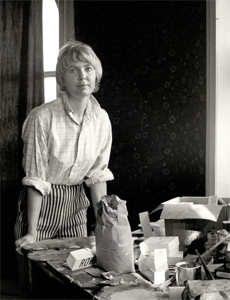
Sandra Betty Blow was an English abstract painter and one of the pioneers of the British abstract movement of the 1950s. Blow's works are characteristically large scale, colourful abstract collages made from discarded materials.
Ben Long is an American painter and the grandson of noted artist McKendree Robbins Long.

Cesare Dandini was an Italian Baroque painter, active mainly in his native city of Florence.

Richard Burchett (1815–1875) was a British artist and educator on the fringes of the Pre-Raphaelite movement, who was for over twenty years the Headmaster of what later became the Royal College of Art.

Michelino Molinari da Besozzo was a notable fifteenth century Italian painter and illuminator, who was widely praised for his work. He worked mostly in Milan and Lombardy, and was employed by the Visconti family, rulers of Milan. Michelino's work follows the traditions of the Lombard School, and maintains the Trecento style.
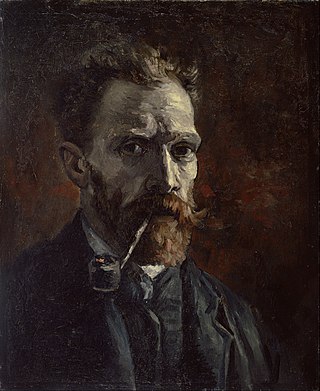
Vincent is an opera in three acts by Einojuhani Rautavaara first performed in 1990. The libretto is by the composer, and consists of scenes from the life of the artist Vincent van Gogh, told in retrospect.
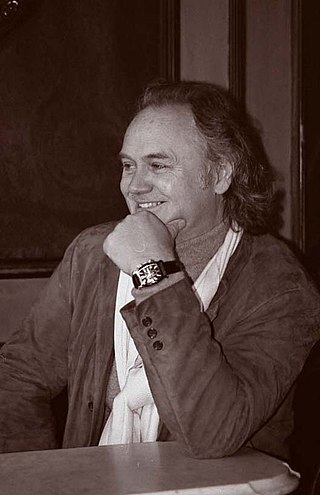
Roy Petley is a British painter.
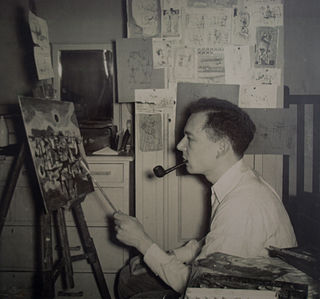
Roy Turner Durrant was a 20th-century English abstract artist. He was born in Lavenham, Suffolk, England on 4 October 1925. He had a love of drawing from an early age which continued as a driving force throughout his life. His lifelong motto was "ars longa, vita brevis" which he may have first seen in the bell tower of Lavenham Church, and following his wish was also carved on his tombstone in Lavenham cemetery.

Johannes Adam Simon Oertel was a German-American Episcopal clergyman and artist.
Lila Katzen, born Lila Pell, was an American sculptor of fluid, large-scale metal abstractions.

Henry Charles Brewer (1866–1950) was a British painter well known in the first half of the 20th century for his watercolour landscapes and architectural paintings.

Alfred Priest was an English painter of landscapes and marine artist, and a member of the Norwich School of painters. Born in Norwich, he was educated to follow his father in becoming a pharmacist, but he left home to work at sea, before briefly working as an apprentice surgeon.

James Alphege Brewer (1881-1946) was a well-known early 20th century producer of colour etchings - notably of English and European Cathedrals and churches and other scenes.
References
- 1 2 "John Pelling (biography)". Jackson & Hickey. Retrieved 30 May 2011.[ permanent dead link ]
- 1 2 3 "About the artist John Pelling". London: St Thomas, Hanwell. Retrieved 3 September 2019.
- ↑ "Barclay brothers come out of purdah with biography", The Sunday Times, 3 August 2003.
- ↑ "Picturegoer – 1957". Picturegoer.net. Archived from the original on 13 April 2001. Retrieved 15 January 2014.
- ↑ "Milk Bottle Museum", The Birmingham Post (archived at thefreelibrary.com)
- 1 2 3 4 5 6 "The Reverend's Feast of Flesh". The Daily Telegraph (London). 7 March 1998. Archived from the original on 26 February 2016. Retrieved 30 May 2011.
- 1 2 3 Garner, Clare (13 April 1998). "The Priest who Paints what he Preaches" . The Independent (London). Archived from the original on 13 June 2022. Retrieved 30 May 2011.
- ↑ Recorded and illustrated here Archived 2003-05-10 at the Wayback Machine .
- ↑ "Stations of the Cross". London: St Thomas, Hanwell. Retrieved 12 June 2011.
- ↑ The work, and in particular its use of vivid colour, is reported in this on-line article.
- ↑ "Art & Devotion". London: St Gabriel, North Acton. Retrieved 3 September 2019.